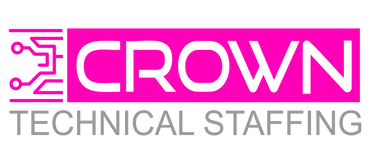Recently a Director of Operations shared with me where they believed the issues on the team began. Poor performers forced them to have to bring on an intern from the local college, hire a 3rd party consultant, and the VP of Ops had to dedicate time out of his day to take on additional tasks. This inevitably created a backlog of work as they were taking time away from their most critical projects to make up for a lack of productivity.
As the leader of your team or department, one of the most critical, yet difficult, decisions involves addressing underperforming employees. This challenge is compounded when the employee has been with the company for years and is seen as a knowledgeable resource. As the saying goes, ‘one rotten apple spoils the whole bunch’: retaining an underperformer can significantly hinder a team’s productivity and erode the culture of excellence that is vital in our industry.
The Impact of Low Performers on Productivity
In our industry, where precision, efficiency, and innovation are paramount, the presence of low-performing team members can have a pronounced impact on overall productivity. Such individuals not only fail to meet the high standards expected in these sectors but can also negatively influence the morale and output of their colleagues.

This stark contrast underscores the importance of maintaining a team composed of highly motivated and capable individuals, especially in fields as critical as ours, where the margin for error is minimal, and the demand for continuous improvement is relentless.
Strategic Personnel Decisions
Retaining a low-performing employee not only diminishes their productivity but also obstructs the growth potential of the entire operation. It represents a missed opportunity to bring on board a more qualified and motivated individual who can contribute significantly to the company’s success.
As Henry Ford famously stated, “The only thing worse than training your employees and having them leave is not training them and having them stay.”
This sentiment is particularly relevant in the Industrial and Automated sectors, where ongoing training and development are crucial for staying ahead of technological advancements and competitive pressures.
Maintaining a positive company culture is essential for fostering employee satisfaction and engagement. An underperforming employee can disrupt the harmony and morale within the team, leading to frustration and a perceived lack of accountability and fairness. Reassigning or terminating employment allows for an evaluation of performance standards, identification of training needs, and the potential to hire a more suitable replacement who aligns with the company’s values and objectives.
Alternative Strategies to Enhance Productivity
Before resorting to termination, there are alternative strategies that can be considered to boost productivity without dismissing a low performer outright. These include reassigning employees to roles that better match their skill sets, offering remote work options, or providing additional training and responsibilities. Such measures can sometimes unlock untapped potential and contribute to the individual’s and the team’s success.
Making difficult decisions, such as addressing underperformance, is a critical aspect of leadership in the manufacturing and engineering sectors. These decisions, while challenging, are necessary to safeguard the productivity and culture of excellence within your business.
We invite our peers and colleagues to share their experiences and strategies for managing underperformance within their teams. Your insights can provide valuable perspectives on nurturing a culture of high performance and operational excellence.
Here are three ways that we can help…
CTS carries out deep talent mapping, nationwide, to ensure our shortlists contain only the very best leaders for your Engineering and Manufacturing teams.
1. We help to attract and retain the best candidates, specifically for your team, in addition to the frontline leaders that you’ll need for growth and stability.
2. Reduce the cost of acquiring and training new hires by supporting and enhancing the efforts of your onboarding team for the first 90 days.
3. Provide a zero-risk and no-cost assessment of your hiring strategies with a 15-minute consultation.


